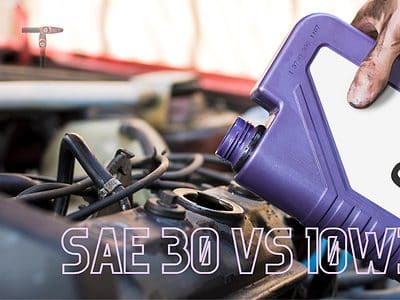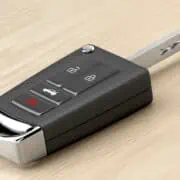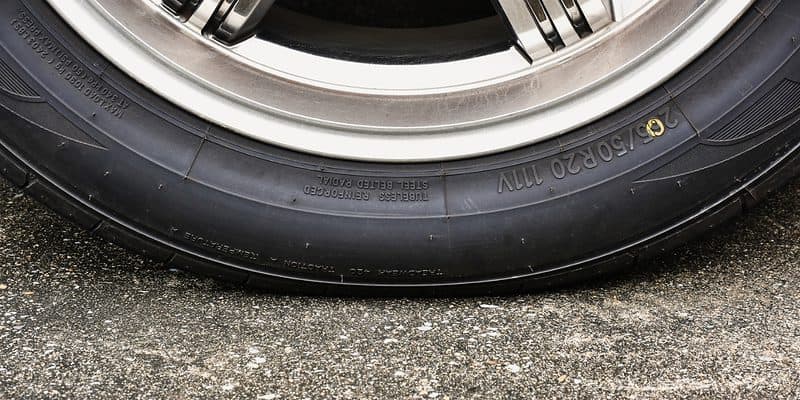
Tires are the only point of contact between your vehicle and the road. As such, they play a crucial role in your safety and performance. But how do you know which tires are suitable for your car? One important factor to consider is the tire size. This article will explore the world of car tire sizes, including how to find and read them so that you can make informed decisions about your tires.
Where to Find Your Car Tire Size
The most common place to find car tire sizes is on the tire’s sidewall. Look for a series of numbers and letters printed on the sidewall, usually located near the rim.
This information will be in the format of XXX/YY R Z, where XXX is the width of the tire in millimeters, YY is the aspect ratio, R indicates the tire’s construction type (radial in this case), and Z is the diameter of the wheel in inches.
Another place you can find your car tire size is in your owner’s manual. This should have all the information you need about the recommended tire size for the specific make and model of the car.
If you don’t have access to your owner’s manual or the tire sidewall is not visible, you can also try looking at your car’s door jamb or in the glove compartment. Some vehicles have a sticker with the tire size and other important information here.
If all else fails, you can try using an online car tire size calculator or contacting your manufacturer. They should be able to provide you with the recommended tire size for your vehicle.
How to Interpret Car Tire Size Codes
Now that you know where to find your car tire size, it’s important to understand how to interpret the codes. Here’s a breakdown of the different elements of a tire size code:
Tire Width
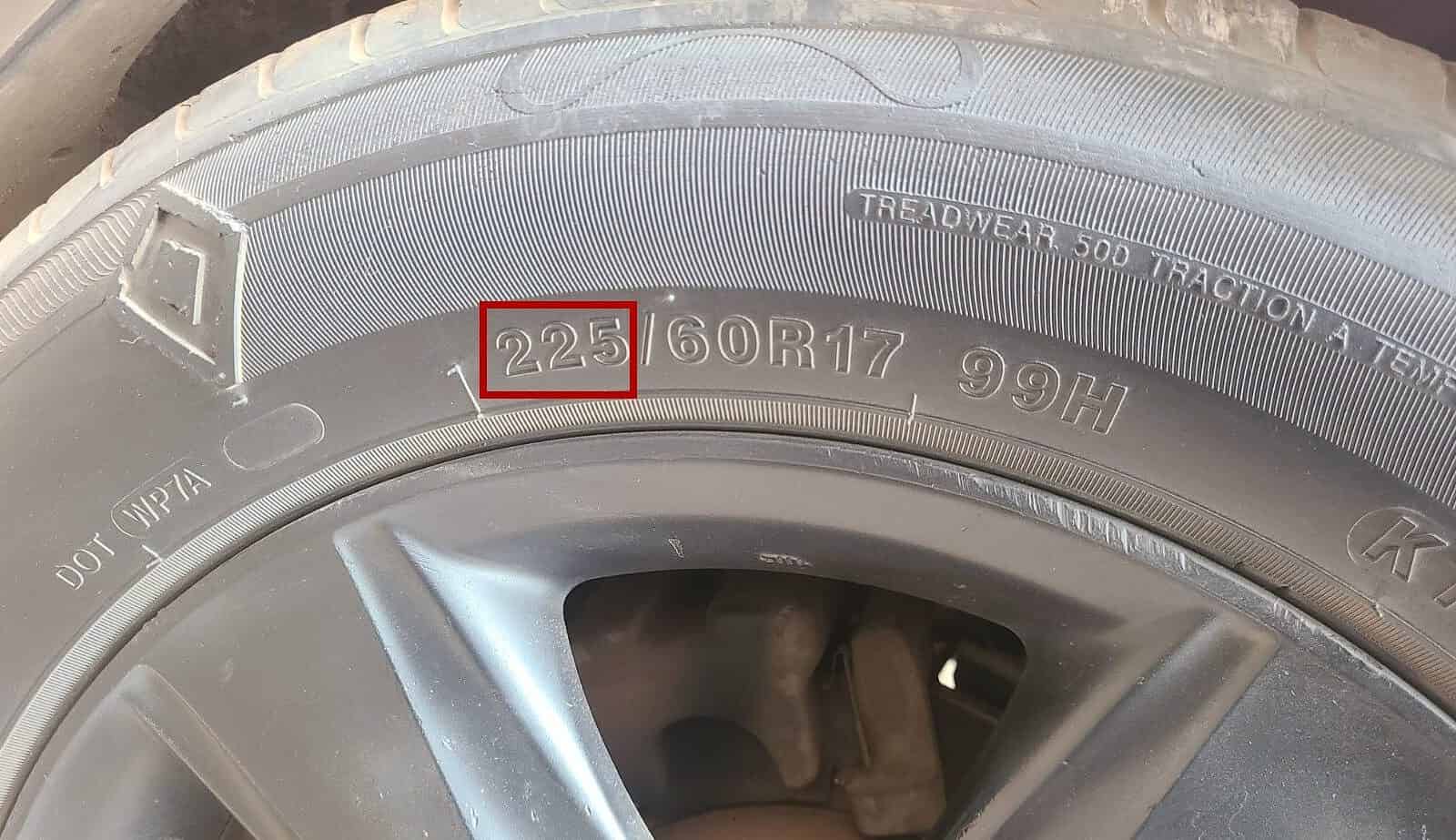
The first three digits of the car tire size code represent the tire’s width in millimeters. This is the distance from one side of the tire to the other, measured at the widest point. A wider tire typically offers better traction but may also result in a rougher ride and increased tire wear.
Aspect Ratio
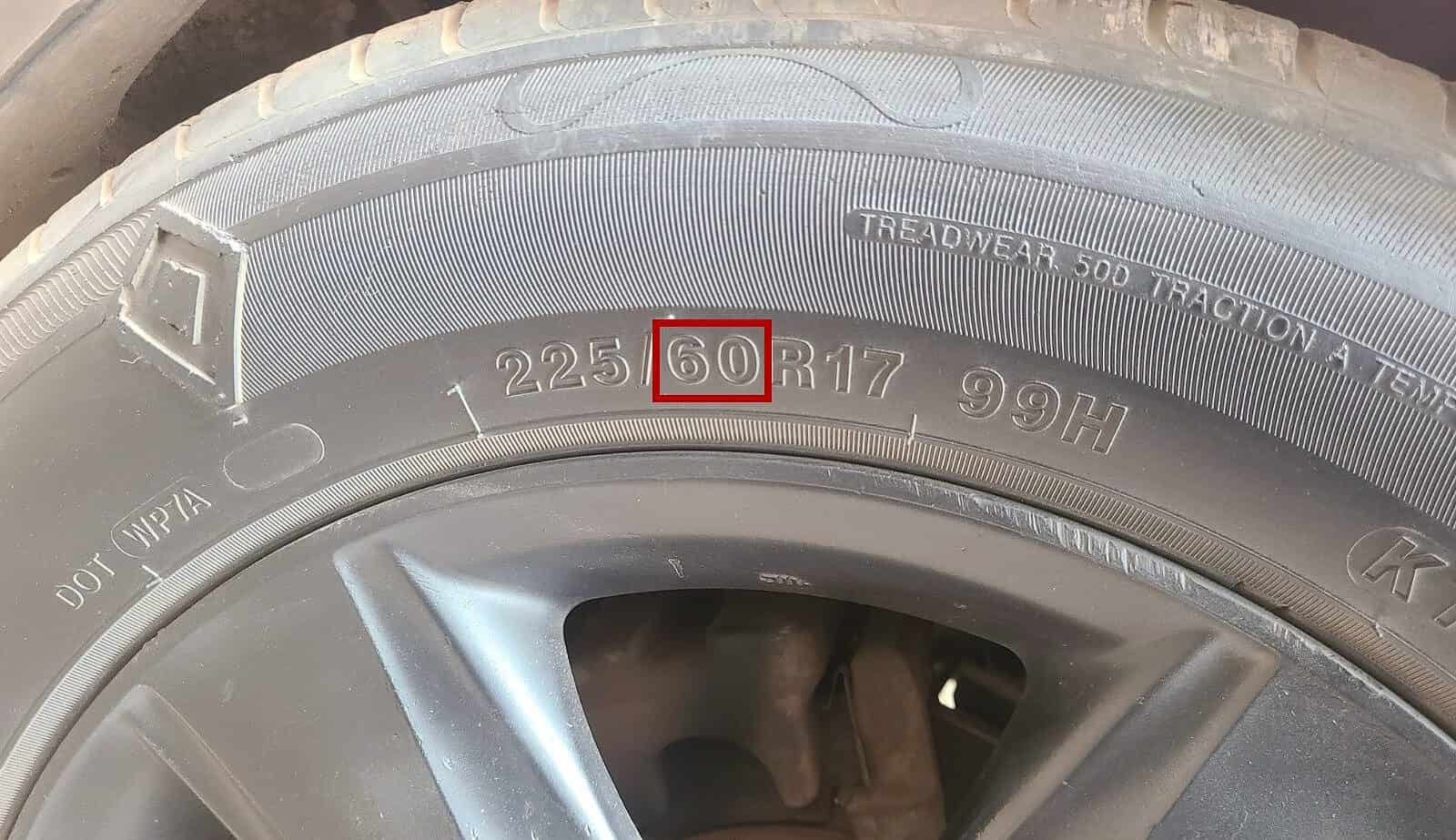
The next two digits after the slash represent the tire’s aspect ratio. It is the sidewall height, expressed as a percentage of the tire’s width, from the rim to the tread. In other words, it is the ratio of the tire’s height to its width. A low aspect ratio, such as 50, means the tire is shorter and wider. A high aspect ratio, such as 80, means that the tire is taller and narrower.
Wheel Diameter
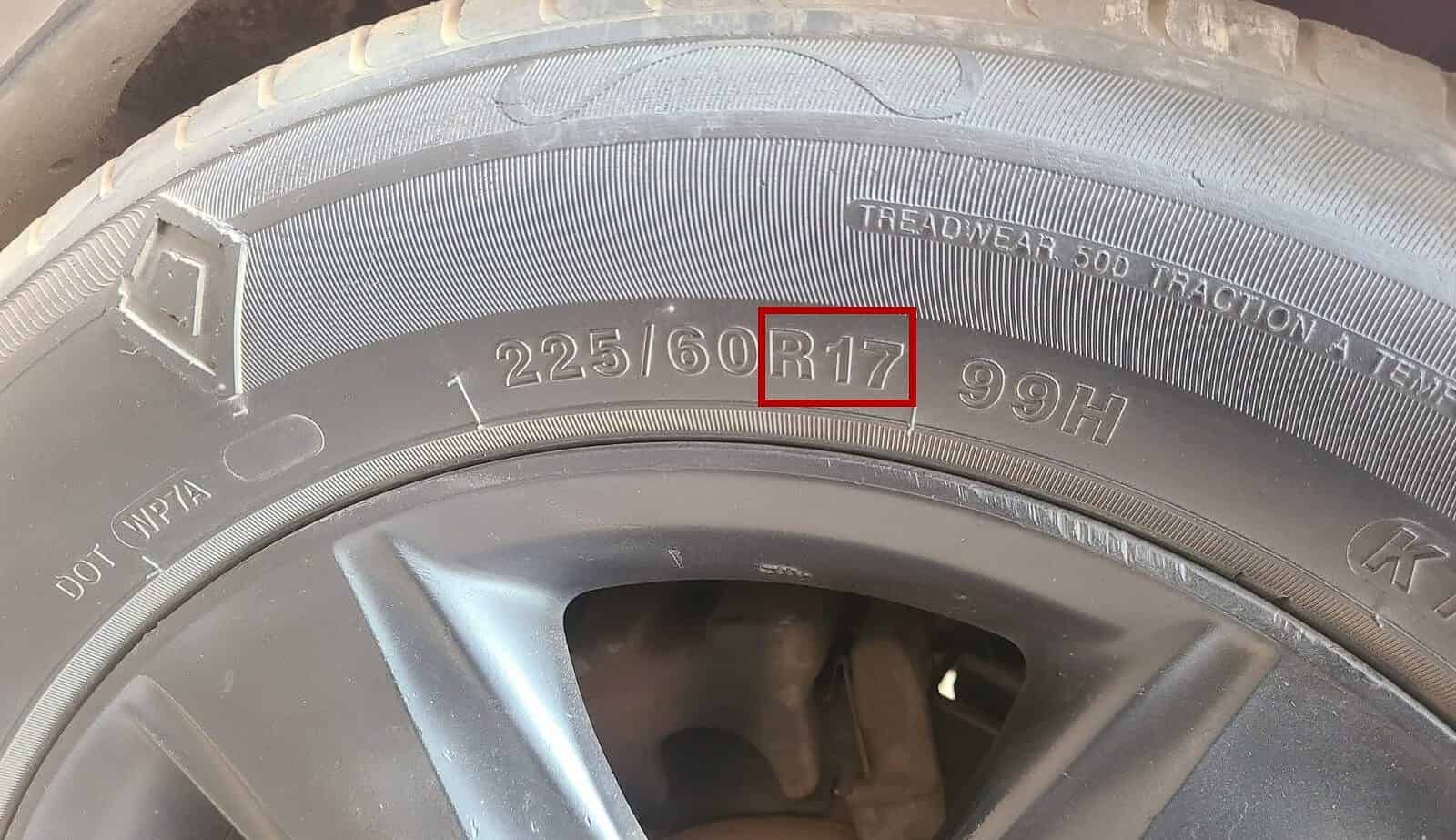
The final letter and number combination indicates the diameter of the wheel that the tire is designed to fit. This is usually expressed in inches. It’s essential to use tires with the correct wheel diameter, as using a tire with the wrong diameter can affect your speedometer’s accuracy and the vehicle’s overall handling.
For example, a tire size code of 225/50 R16 means that the tire has a width of 225 millimeters, an aspect ratio of 50, and is designed to fit a 16-inch diameter wheel.
The Meaning of the Letters on Car Tires
In addition to the numbers that make up the tire size code, you may also see a series of letters on your car tires. They indicate different things, including the tire’s load-carrying capacity, speed rating, and other performance characteristics. Here are some of the most common letters you might see on your tires and what they mean:
Tire Type
The first letter of the car tire size code indicates the tire type. For example, p stands for passenger, T stands for temporary (or spare) tire, and LT stands for light truck. It’s important to use the correct tire type for your vehicle, as the wrong one can compromise your safety and performance.
Speed Rating
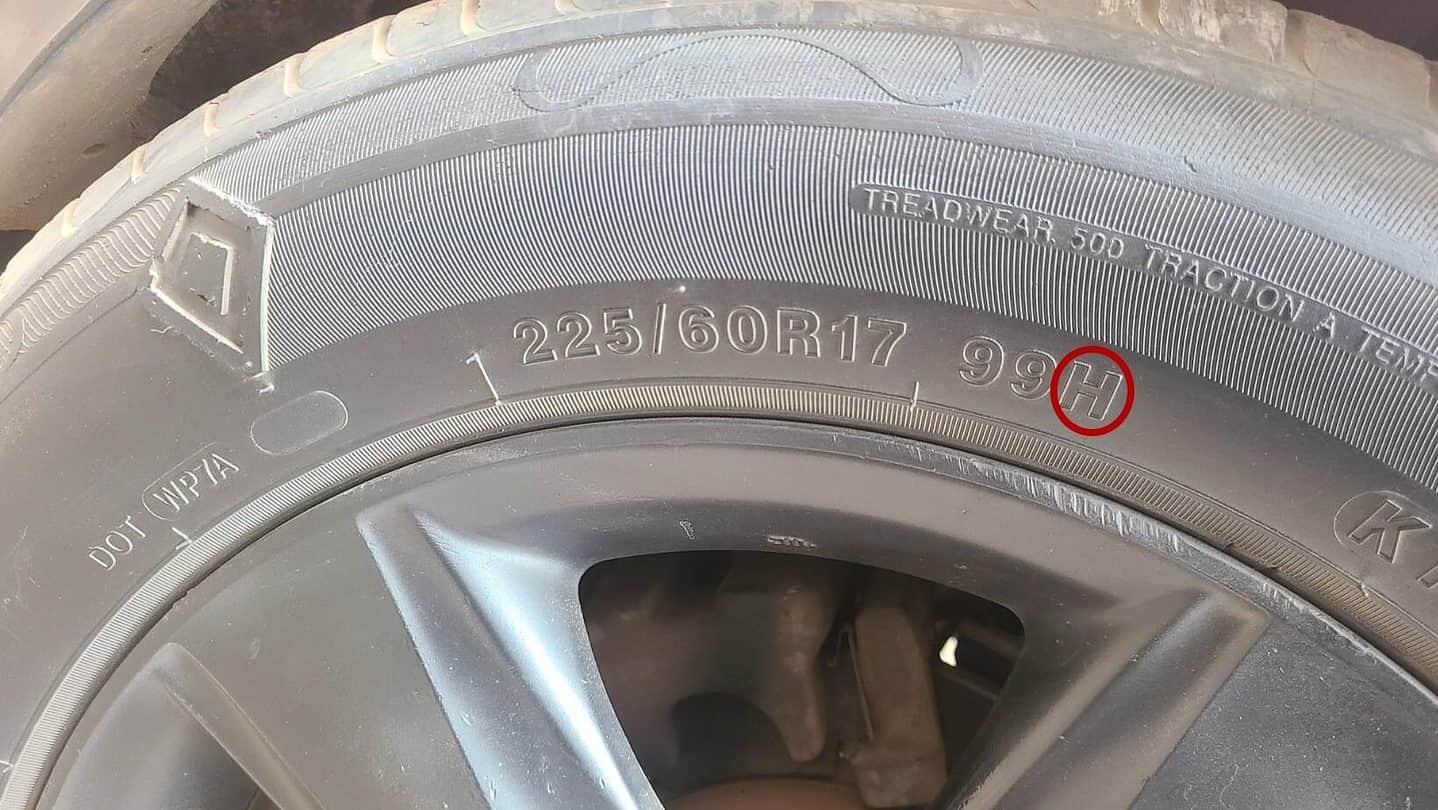
The final letter of the car tire size code indicates the tire’s speed rating. This is a measure of the tire’s maximum speed capability based on laboratory testing. A higher speed rating generally means that the tire can withstand higher speeds, but it doesn’t necessarily mean that it is better in other regards, such as handling or ride comfort. Here are some standard speed ratings and their corresponding maximum speeds:
- T: 118 mph
- H: 130 mph
- V: 149 mph
- Z: 149+ mph
Internal Tire Construction
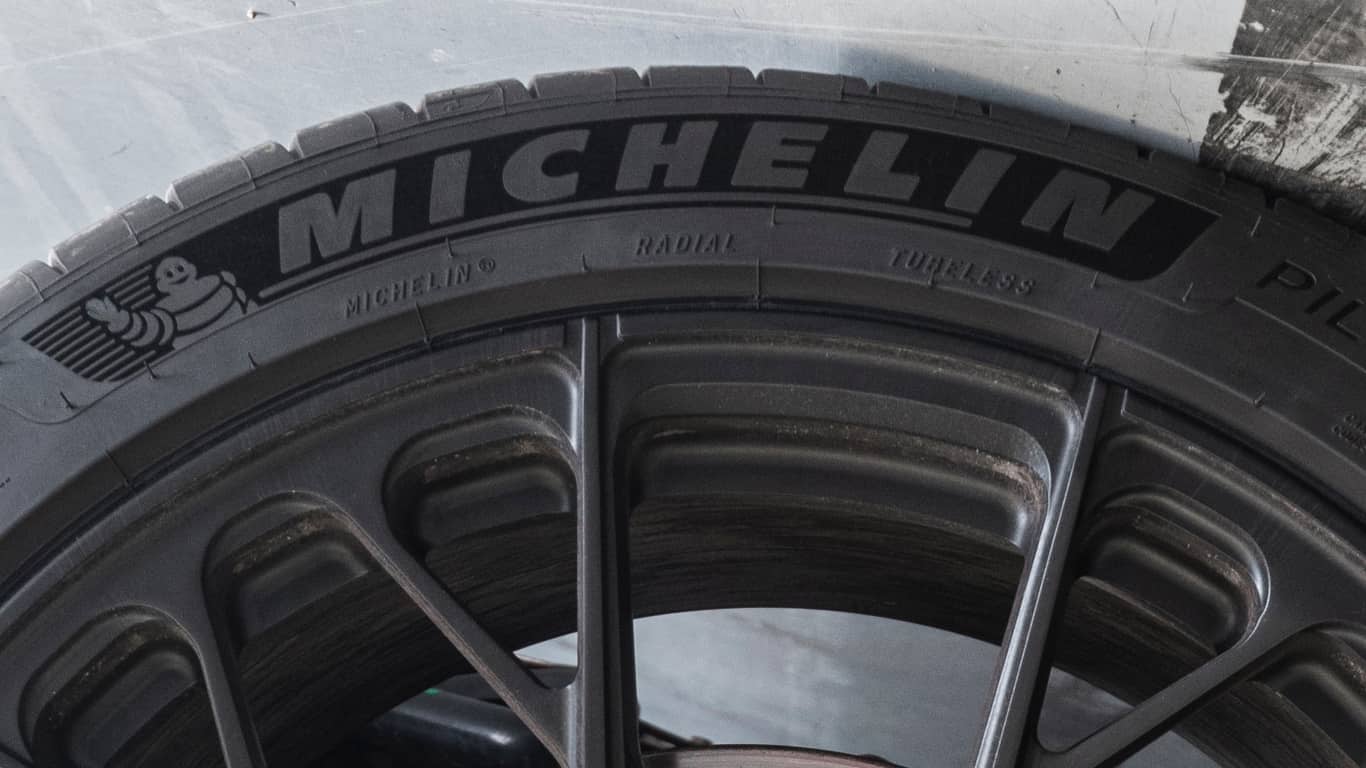
Have you ever wondered what the R or D after the aspect ratio and before the rim size stands for in tire sizing? In addition to other symbols, it describes the construction used in the tire. The type of tire mainly depends on its construction. The performance and durability of the tire will vary depending on where the belts are positioned.
Radial Tires
The letter R will appear in the tire size code after the aspect ratio, signifying a radial construction. Usually, the tire type is also spelled out in full on the sidewall, as in the above image. The plies are radially arranged from one sidewall to the other at a 90-degree angle to the tire’s centerline.
This tire type is the most popular on roadways because the radial ply positioning optimizes it for better handling and a smoother ride. However, this makes radial tires less durable than other types.
Diagonal Tires
Diagonal tires, also known as cross-ply tires, are less common than radial tires. They’re represented by the letter D, which is also placed before the wheel diameter. Here, the ply construction is diagonal, with the layers arranged at a 45-degree angle to the tire’s centerline.
Diagonal model tires are more commonly used on trailers, as the construction gives them a higher load-carrying capacity and better puncture resistance. However, it also results in a rougher ride and less precise handling.
Bias Ply Tires
Bias-ply tires are not officially identified by a letter. Instead, the aspect ratio and rim measurements on the tire code are separated by a hyphen (-). They are similar to diagonal tires in that the ply layers are angled, but they are arranged at a 30-45 degree angle to the tire’s centerline.
This increases the tires’ tensile strength, giving them a high load-carrying capacity and good puncture resistance. However, it also results in poor handling and a rough ride, like diagonal tires. Bias ply tires are commonly found on older vehicles or specialized equipment such as trailers and forklifts.
Other Essential Car Tire Numbers
In addition to the size and type, there are a few other figures you should be aware of when it comes to car tires:
Load Index & Max Load
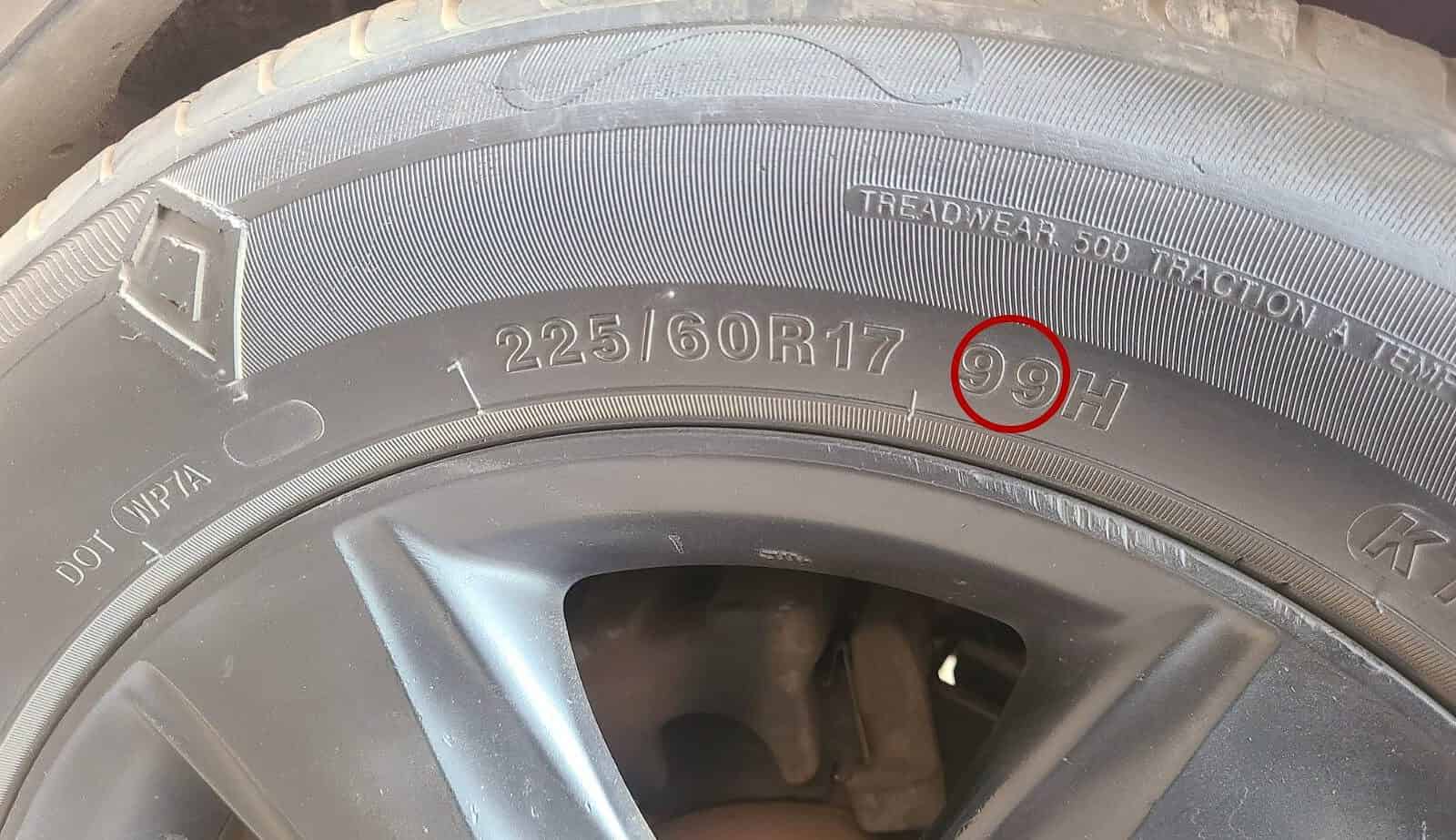
The load index indicates the maximum load-carrying capacity of a tire. It is typically found on the sidewall of the tire and is expressed as a two or three-digit number. It’s important to use tires with a load index that is appropriate for your vehicle, as a lower value can cause failure and potentially result in an accident.
The max load is the same as the load index. However, unlike the load index, which gives a rating with no unit, the max load states the exact weight the tire can safely carry in pounds (lbs) or kilograms (kg). It is also found in your owner’s manual or tire sidewall.
It’s important to note that both parameters indicated the max load when the tire is fully inflated. In other words, the tire will support less weight if the pressure drops.
Max Pressure
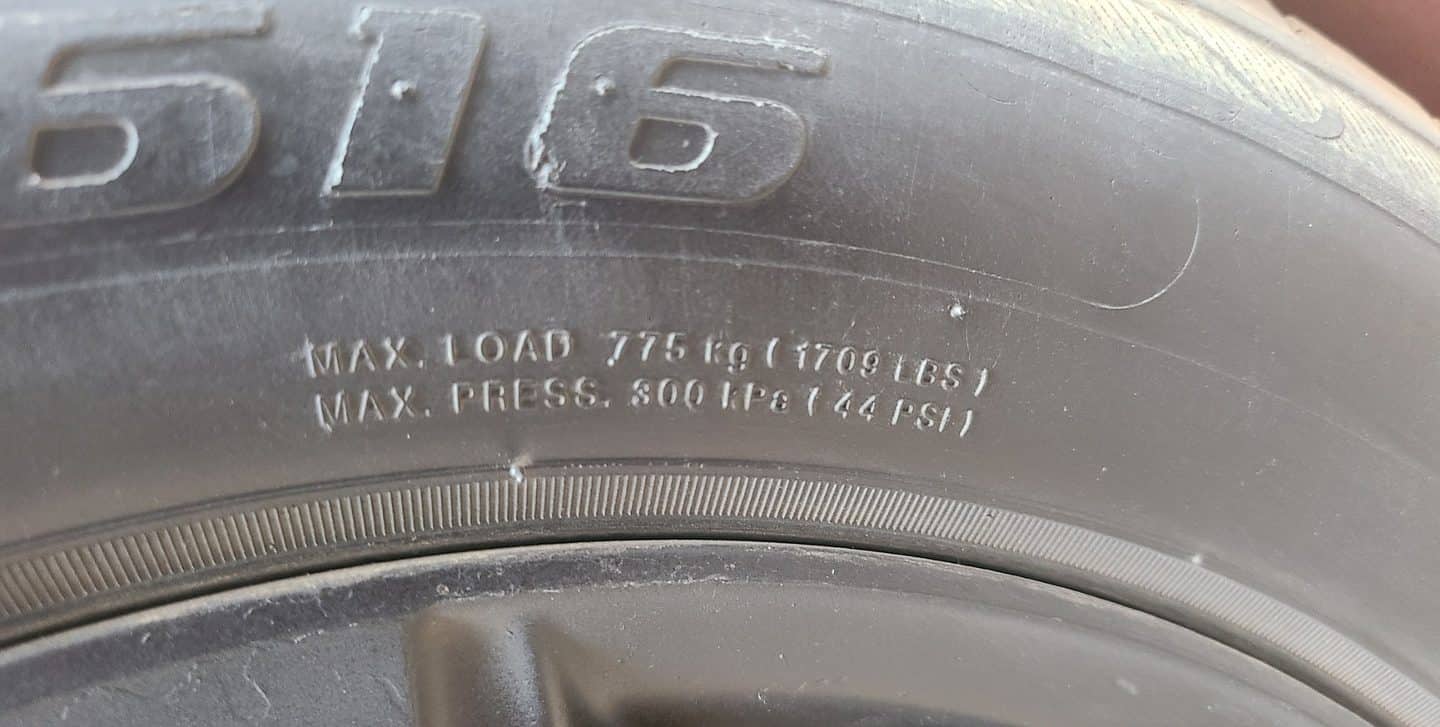
The max pressure is the total air pressure the tire can safely hold. This is typically expressed in pounds per square inch (psi) and can be found on the tire’s sidewall. Like load index, you shouldn’t exceed your tire’s max pressure; this can cause it to fail.
Manufacture Date
As the name implies, the manufacture date is when the tire was produced. It is indicated by a four-digit code on the sidewall, with the first two digits representing the week of production and the second two representing the year.
For example, a tire with a manufacture date of 2022 was produced in the 20th week of 2022. It’s important to know the tires’ age and change them when they expire, usually six years from the manufacture date.
UTQG (Uniform Tire Quality Grading)
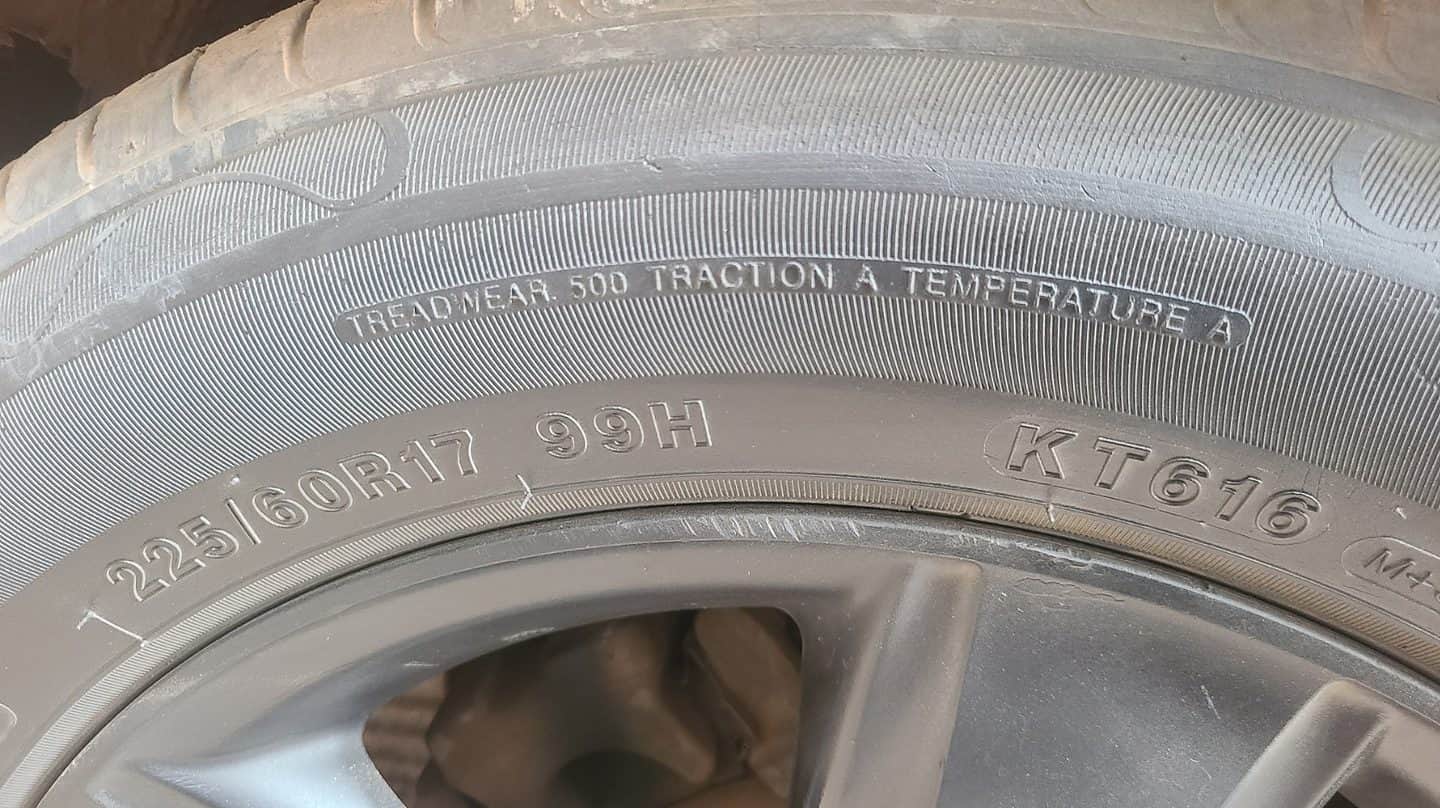
The U.S. Department of Transportation created the Uniform Tire Quality Grading system, or UTQG, to help consumers make tire purchases based on a standardized performance-focused system. It covers treadwear, traction, and temperature capabilities.
Treadwear Grade
The treadwear grade is a comparative rating based on the wear rate of the tire. A tire with a higher treadwear grade should last longer than a tire with a lower treadwear grade. The treadwear grade is expressed as a three-digit number, with a higher number indicating a longer-lasting tire.
For example, a tire with a treadwear grade of 500 is expected to last twice as long as a tire with a treadwear grade of 250. It’s important to note that the treadwear grade is a relative measure and does not necessarily indicate the actual lifespan of the tire. Plus, actual usage conditions affect how long your tire lasts.
Traction Rating
The traction rating measures the tire’s ability to stop on wet roads and slick pavement. There are four possible traction ratings: AA, A, B, and C, from best to worst. Tires with a higher traction rating—and therefore, shorter stopping distance—can grip the road, halt quickly on wet surfaces, and are better for safety.
Temperature Grade
Heat build-up on tires while driving is normal, and the temperature grade measures a tire’s ability to withstand and dissipate heat. It is rated on a scale from A (best) to C (worst). Tires with a higher temperature grade can better withstand high temperatures and maintain their structural integrity, which can improve the tire’s lifespan.
Severe Snow Conditions and M+S (M/S)
If you live in an area with severe snow conditions, you may need to use tires specifically designed for snow and ice. These tires, also known as winter tires, have a tread pattern and compound that is optimized for traction in cold, wet, and snowy conditions.
You can identify a winter tire by looking for the M+S (Mud and Snow) symbol on the sidewall, which indicates good traction in mud and snow. However, it’s important to note that the M+S symbol does not guarantee that a tire is suitable for severe snow conditions.
For such extreme conditions, you need winter tires with a three-peak mountain and snowflake symbol. This indicates that the tire has been certified for severe snow service by the Rubber Manufacturers Association. Using all-season or summer tires in severe snow can compromise your safety and performance.
How to Read the US DOT Tire Identification Number
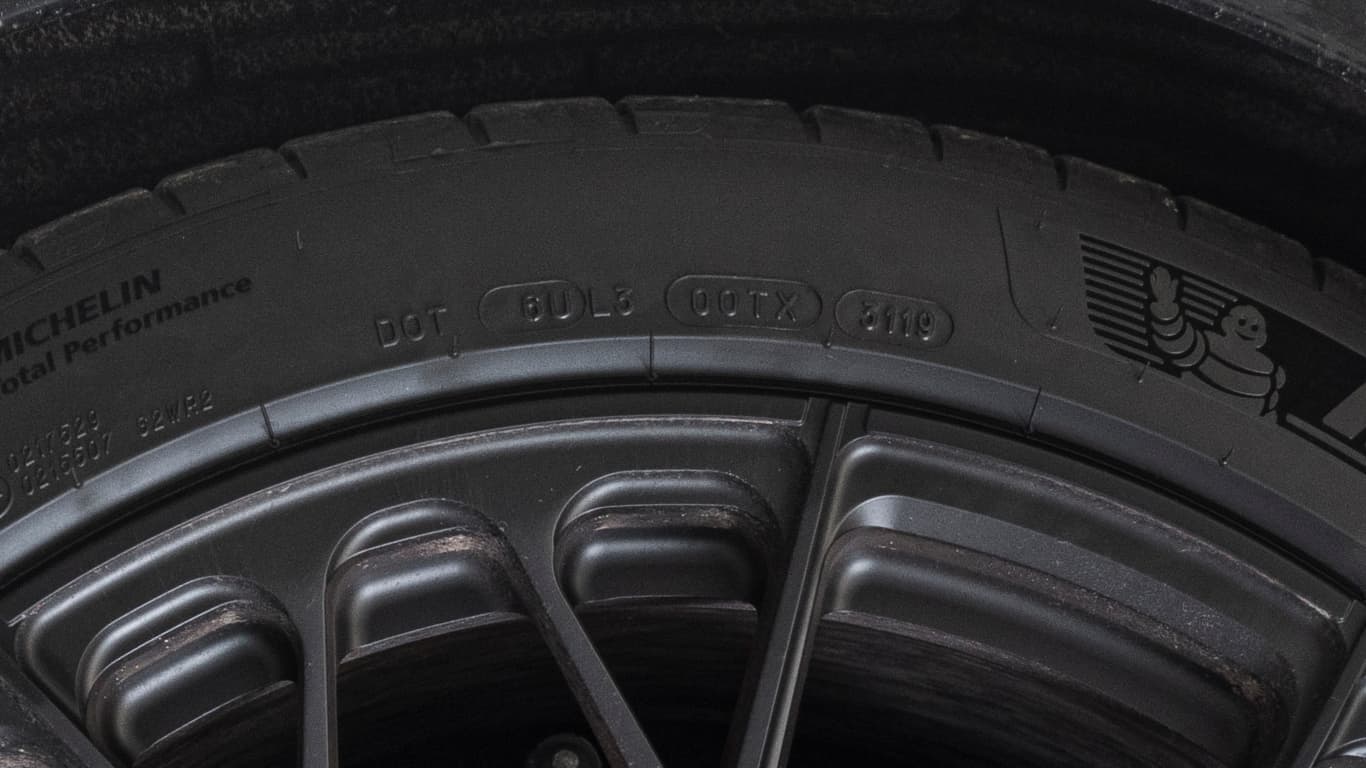
In addition to the car tire size and UTQG ratings, you may also see a long string of numbers and letters on the sidewall of your tires. This is the US DOT (Department of Transportation) tire identification number, also known as the tire serial number. It is a series of codes that provide important information about the tire, including the manufacturer, size, and production date.
Here’s how to read the US DOT tire identification number:
- The first two digits represent the manufacturer’s code. This code is assigned by the US DOT and identifies the company that produced the tire.
- The next two digits represent the car tire size code. This code indicates the tire’s width, aspect ratio, and wheel diameter, as well as other details such as the tire’s construction type and load-carrying capacity.
- The following two digits represent the tire’s load index. This number indicates the tire’s maximum load-carrying capacity, as described earlier.
- The next digit represents the tire’s speed rating. This letter indicates the tire’s maximum speed capability, as described earlier.
- The final four digits represent the tire’s production date. The first two digits represent the week of production, and the second two represent the year.
Choose the right tires for your vehicle
Understanding car tire sizes and codes is essential for the safety and performance of your vehicle. By knowing where to find your tire size and how to interpret the code, you can make informed decisions about your tires.
Choose the right tire size for your vehicle, as the wrong size can affect the accuracy of your speedometer and the car’s overall handling. Consider the tire’s internal construction, UTQG ratings, and any special requirements, such as severe snow or high load-carrying capacity, and adhere to them while using your car.
FAQ
What Is the Tire Size Code, and Where Can I Find It?
The tire size code is a series of numbers and letters that indicate a tire’s size, load-carrying capacity, and speed rating. It is typically on the tire’s sidewall and may also be found in your vehicle’s owner’s manual.
How Do I Interpret the Tire Size Code?
The tire size code consists of several elements, including the tire width, aspect ratio, and wheel diameter. The first three digits represent the tire width in millimeters, the next two represent the aspect ratio, and the final letter and number combination indicate the wheel diameter.
What Do the Letters on My Tires Mean?
The letters on your tires may indicate the type (P for passenger, T for temporary, and LT for light truck), the speed rating (T, H, V, Z, etc.), and the tire’s construction (R for radial, D for diagonal, – for bias ply).
What Is the UTQG System, and What Do the Grades Mean?
The UTQG (Uniform Tire Quality Grading) system is a standardized system used to rate tires based on their performance characteristics. The three main components are the treadwear grade, traction rating, and temperature grade.
The treadwear grade is a comparative rating based on the tire’s wear rate, the traction rating is a measure of the tire’s ability to stop on wet roads, and the temperature grade is a measure of the tire’s ability to dissipate heat.
What Is the U.S. DOT Tire Identification Number, and How Do I Read It?
The US DOT tire identification number, also known as the tire serial number, is a series of codes that provide essential information about the tire, including the manufacturer, size, and production date.
The first two digits represent the manufacturer’s code, the next two represent the tire size code, the next two represent the tire’s load index, the next digit represents the tire’s speed rating, and the final four digits represent the tire’s production date.
Can I Put Larger Tires on My Car?
It is not recommended to put larger tires on your car without consulting a mechanic or the manufacturer. Larger tires can affect the speedometer’s accuracy and the vehicle’s handling, and using the wrong size can compromise your safety.
If you must change your tire size, choose one that’s appropriate for your car and meets the manufacturer’s recommendations.






